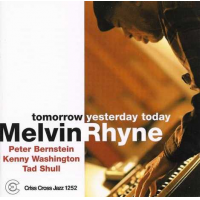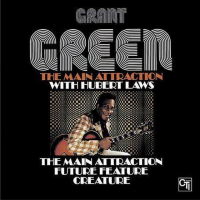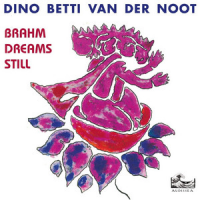Home » Jazz Articles » Liner Notes » Hal Galper: Ivory Forest Redux
Hal Galper: Ivory Forest Redux
Scofield's 1979 quartet release, Rough House (Enja,1979) featured Galper, along with bassist Stafford James and then young drummer, Adam Nussbaum. Galper's 1980 release, Ivory Forest (Enja, 1980) was supposed to be Scofield's next offering, but he was unable to release the effort in his name following his signing with a different label. Galper became the de facto leader of the date, an easy adjustment considering that he had composed all four original compositions on the album.
"It wasn't supposed to be my date, that was supposed to be John's date. He told me he couldn't do it under his name, he had just signed with another record company," recalls Galper. "We worked a lot locally in New York, and we did two European tours. We did two recordings, the first being his album, Rough House. It has one of my favorite solos on it, 'Air Pakistan.' I had been working on pentatonics for years—everybody was playing patterns, but the idea was to play them melodically. That was the first time I was able to do that. That gig served the function of allowing me to play pentatonic patterns melodically. I had finally achieved that. It was a musical situation where I could lock it in, a turning point for me."
In essence, the groundbreaking pianist had found a partner who simply allowed him to be himself. There were aspects of his playing that were generally considered to be taboo in the bebop and post-bop aesthetic of modern jazz.
"I like to comp orchestrally, but a lot of horn players and soloists do not like that. I want to be an orchestra, and the pianist's role in Bebop is very conservative." says Galper. "I want to be a string section, trombones, stuff like that. John was the only one who let me do that. It was busier than usual, so those with that conservative view of comping didn't like me when I did that. Sco played against it and used it like you would use an orchestra, as if he was saying,'OK, I'm up for that.'"
Adding Nussbaum to the mix made sense. Scofield's Rough House session and subsequent live dates gave him insight into what he was dealing with. He was the youngest of the four and his star was ascending rapidly among modern drummers. Still, he entered the October, 1979 Ivory Forest session as a more accomplished and confident player than he was just a scant year before.
"Adam Nussbaum was young, he had a great beat. He swung, but there was a lot he did not know. I was kicking his ass, I was merciless. He'll tell you that he thanks me for that forever. You can tell that by the time we recorded Ivory Forest, he had gotten a lot better," Galper remembers.
Nussbaum also served as a "third hand" for Galper, seated at the piano with him during the recording of one track. "Adam plays piano on one cut, 'Continuity.' He plays one note, a low E, because I couldn't do three parts like I needed to do to make the piece work. I couldn't do the bass note every four bars, he had to hit that low E, every four bars. He was sitting with me at the piano," recalls Galper humorously.
Bassist Wayne Dockery had been in several iterations of Galper's band, including the mercurial quintet that included Michael and Randy Brecker. One might say that Dockery was wired with the same intensity as his bandleader in those days. It was not uncommon in that era for bandleaders to use tension, or actual anger to motivate the players. Coming into a gig off the road without getting to the hotel, playing the gig tired and hungry, often led to squabbles between bandmates that raised the intensity level on the bandstand. "The masters, they knew how to handle us," states Galper, citing Roland Kirk as an example. "Wayne and I, we go way back. He's a good friend. He was always trying to get on top of the beat with me, and nobody gets on top of me! It was a constant battle. That kind of tension helped the band. The battle itself was creating a certain amount of intensity, so I put up with it," says Galper.
The pure energy of the madly swinging "Rapunzel's Luncheonette" and the mood swing with the more pensive title track, illustrates the range of emotions explored on Ivory Forest, Galper's often touted intensity is most often tempered with his penchant for melodic beauty. His pathway to innovation throughout his career has been the ability to play "out," while still being very much inside the harmony of a tune. "Continuity" finds both he and Scofield sketching lines within the expansive space created by Galper's colorful, orchestral playing.
"I want to be able to play inside and out, without anybody noticing, and play it pretty," says Galper sporting a devilish smile. "Sneaky, I want to be subversive, I'm from the Mad Magazine generation!"
Scofield's solo treatment of Thelonious Monk's "Monk's Mood," and Galper's trio interpretation of the Alvaro Carillo bolero, "Yellow Days" (La Mentira), allows the listener to experience both artists as singular entities before the inevitable joining for Galper's four contributions.
More than forty years after the release of Ivory Forest, the music still sounds very modern. It brings to light how far ahead of the curve both Galper and Scofield were dwelling in that very critical era of jazz history. This re-release enables a re-engagement with the album by most importantly, new generation jazz listeners previously unfamiliar. With the entire world of music literally in their hands on a daily basis, they can walk through that passageway and enter the mindset of two of the genre's true, modern masters. "That's why I wanted Origin to put it out," says Galper. "It's history."
Liner Notes copyright © 2026 Paul Rauch.
Ivory Forest Redux can be purchased here.
Contact Paul Rauch at All About Jazz.
I am a writer, producer and coordinator in the jazz community, living in Seattle.
Track Listing
Ivory Forest; Continuity; My Dog Spot; Monk's Mood; Yellow Days; Rapunzel's Luncheonette.
Personnel
Album information
Title: Ivory Forest Redux | Year Released: 2022 | Record Label: Origin Records
Tags
PREVIOUS / NEXT
Support All About Jazz
 All About Jazz has been a pillar of jazz since 1995, championing it as an art form and, more importantly, supporting the musicians who make it. Our enduring commitment has made "AAJ" one of the most culturally important websites of its kind, read by hundreds of thousands of fans, musicians and industry figures every month.
All About Jazz has been a pillar of jazz since 1995, championing it as an art form and, more importantly, supporting the musicians who make it. Our enduring commitment has made "AAJ" one of the most culturally important websites of its kind, read by hundreds of thousands of fans, musicians and industry figures every month.

























